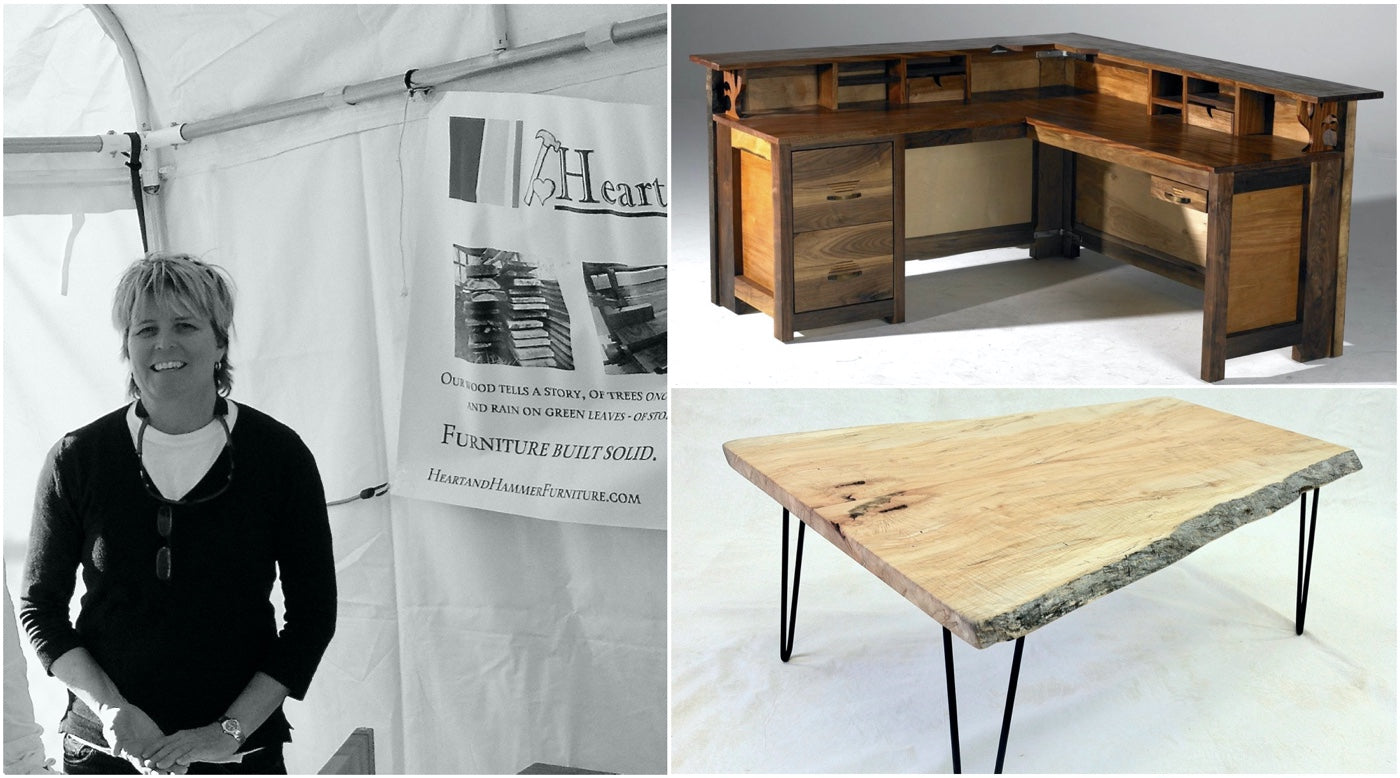
The Winding Path of a Woodworker
Lisa Sikes is a woodworker and maker by soul. When asked about a specific point in time when she knew that her hobby would turn into a career, she struggled to find an immediate answer. “It’s a winding path … none of it is linear, I’ll tell you that.”
The first nail
One of Lisa’s first memories is taking the wheels off her sister’s doll buggy to make a go-kart for herself, unscrewing the wheels of her sister’s precious toy to create her own. While it didn’t work, the energy she felt during the creative process hooked her. This technical journey was invigorating. Even when it didn’t work, it was exciting to create something new from a concept in her brain to an object in the real world.
She spent most days in her parents’ garage so much so that for Christmas each year her father’s only wish was to replenish his nails, screws, and other tools she’d use in the previous year.

Lisa grew up in the 70s during a time where girls did not belong in the woodshop and certainly did not define themselves as woodworkers. That didn’t stop her. It couldn’t.
The second nail
Lisa took shop class through high school where most of the time she was one of only a few girls. However, this didn’t lead to camaraderie. The girls she encountered didn’t take woodworking classes to actually gain shop experience. Instead of providing her support, they played into the existing stereotype that woodworking was just for the boys by calling Lisa butch.
It certainly wasn’t easy, but when you love a craft, you love it wholeheartedly. It doesn’t matter what anyone else thinks or says. You do it because the work is fulfilling and makes you happy. Lisa’s strong conviction and passion for woodworking kept her going.
The third nail
When Lisa was in graduate school, she still wasn’t 100% sure what she wanted to do for her career. An answer came by chance when she took a different route from class which led her to discover a local scene shop.
"They built this beautiful new scene shop. It had huge windows with arches at the top and large roll up doors. When I first walked by, the music was playing and there were all these people working. I was like ‘I want to be a part of this’."
Lisa started to come by whenever she could to get a glimpse of the stunning wooden creations until one day the technical director noticed and asked if she’d want to join the shop. Lisa eagerly accepted the invitation to get a work-study job with the shop. It was there that she started to realize that this could evolve into a career.
The technical director could sense her drive and he eventually gave Lisa the opportunity to be the shop leader. He taught her how to manage extra responsibilities and how to lead the team by taking control of the room regardless of the sexist stigma that still exists in this predominantly male trade.
“I didn’t have that booming voice and I didn’t have that tall stature. I’m 5’5”, petite. One day, my master professor got a prop gun from the safe and he put a cap in it and he handed it to me. ‘Point it at the ceiling,’ he said. That’s one way to do it.”
The fourth nail
After graduate school, Lisa kept making creations with woodworking. She initially freelanced by taking residence in co-op spaces where she shared the shop with others. Afterward, she rented her own shop space for a few years. Her winding road also includes freelancing on film sets, trade shows, and theater sets, followed by working in the shops of a few ad agencies. Now, if Lisa has a project, she rents shop space by the hour, but she hopes to own her own shop soon.
“The shop is my happiest place. I don’t need anyone else to be there. I’ll have the music turned up and I’ll work all day and forget to eat lunch. I’m as happy as I can be and then the day ends. It is a meditation.”
The wrench
Through the years, woodworking trade has slowly started to become more inclusive. There are more featured female artisans frequenting magazine covers like Pottery Barn as the American zeitgeist embraces acceptance. What hasn’t changed are the tools. Though Lisa is able to do the work, oftentimes she has to use tools that were designed for men with a much larger stature.
“The physical fact that things are built just a certain percentage larger than me—this leads to language like ‘oh, you’re a girl. This is a boy’s job’. It’s not that I can’t do the job. I have the skills to do the job, and I do it well. But everything is built to be the upper limit of the standard male, which is just out of my limits, or barely within my limits if I struggle. The tools just do not fit my body.”
Pressing forward
Lisa’s advice to those pursuing dreams in a predominantly male field is something any woman can take to heart.
“Do not accept the feeling of 'less than' that sneers and eye-rolling at your presence on a job site can so effectively deliver. Don't allow that pressure to put you in harm's way. It may make you feel that you have something to prove. There is nothing to prove. You just stride onto that job site, use your Wonder Woman bracelets to deflect any snark aimed in your direction, and work hard with the beautiful body that you have because that is enough.”



